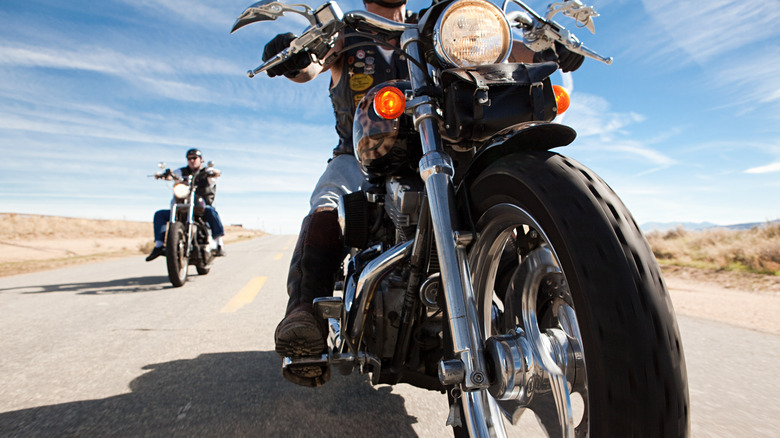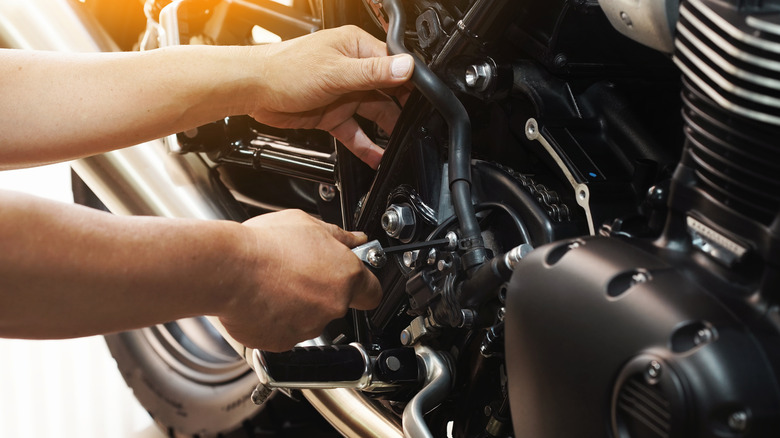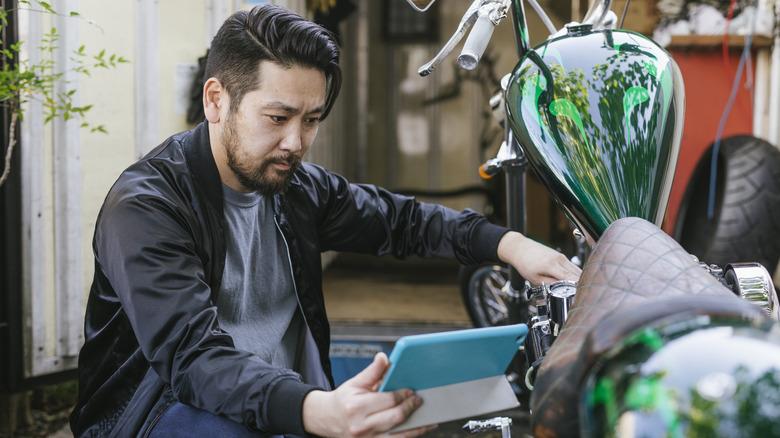4 Tips To Help Keep Your Motorcycle Engine Cool In Hot Weather
Even with the heat, many bikers consider summer one of the best seasons for riding; the days are longer, the skies are clearer, and so there's lots of sunshine. With the more extreme seasons behind them, most bikers look forward to more stable weather and the better riding conditions that come with it. However, if you plan to do a lot of riding in the summer, along with making sure you have the right motorcycle accessories to keep you safe, there are certain precautions you should take to protect your engine in the hotter months.
As the mercury rises, high temperatures can take a toll on your motorcycle's engine, causing problems like overheating. Ignore this at your peril, as it could turn into even bigger issues — your bike's engine block and head could begin to warp and swell, and you could find yourself facing expensive repairs due to engine damage. The good news is that it doesn't have to be that way. Your bike can coexist with the hot summer weather as long as you take precautions to keep your engine cool as the temperatures soar.
Regular maintenance
Becoming familiar with some of the must-know tips for motorcycle maintenance can go a long way toward helping you keep your bike in the best condition possible. When the warm (or scorching hot, depending on where you live) summer temperatures arrive, you'll want to turn your attention to your motorcycle's cooling system. If your bike's cooling system is working properly, you won't have to worry about it overheating or the performance of its engine suffering in the heat. You should check your bike's coolant levels regularly and make sure you maintain the proper levels.
Using the right coolant can also make a big difference in how your bike performs in the heat. Since coolant works by absorbing heat and transferring it from the engine to the radiator, it plays an important role in keeping the engine cool in hot weather. A high-thermal coolant is the best choice in the summer months because it can protect the engine even in extremely hot weather. Besides checking your bike's coolant, you should also check the radiator and hoses for any signs of leaks. The radiator fins should be cleaned of any debris to make sure the air can flow properly and cool the engine efficiently. You should also stay on top of your motorcycle's oil changes because oil helps dissipate engine heat in addition to lubricating the engine.
Use the right engine oil
Even the most reliable motorcycles ever built need the right engine oil to perform optimally in hot weather. When choosing an oil for riding in the summer heat, you want to look for higher-grade oils. These oils provide better heat resistance and lubrication and will help keep your engine running smoothly and prevent overheating. In the summer, you should check your engine oil once a week and top it off as needed to maintain the right levels. If you have a bike with an older engine, you may need to replace the oil more often because older engines tend to burn through oil more quickly than newer bikes. Doing these things will reduce the chances of your motorcycle overheating.
Synthetic oils perform better than mineral oils in hot weather, making them the preferred choice unless you have a bike with an older engine that can't use them. That's because synthetic oils do a better job of withstanding higher temperatures than conventional oils, and they maintain their viscosity and provide better lubrication in extreme temperatures.
Get an EGT sensor
While not a standard component on most motorcycles, an upgrade worth considering to prepare your bike for the summer heat is an exhaust gas temperature (EGT) sensor. With this device, you'll be able to monitor and manage your engine's temperature in real time. The EGT works by measuring the temperature of the exhaust gases exiting the engine. If the exhaust temperatures are high, this could mean the engine is running too hot, which could lead to your engine overheating.
The engine control unit (ECU) works closely with the EGT, with the EGT sensor sending the ECU temperature data that it uses to adjust fuel and air mixtures, ignition timing, and other parameters to prevent overheating if the temperature reaches dangerous levels. The EGT acts as a preventive tool that uses real-time data to keep your engine from reaching temperatures that could result in your engine getting too hot. If your bike doesn't have an EGT, the ECU may not get the correct information about the engine's exhaust temperatures. Without this information, the ECU might not be able to make the necessary adjustments to keep your engine cool.
Adjust your riding habits
Your riding habits can have a big impact on how your motorcycle's engine handles hot weather. When it's hot outside, one of the best things you can do for your bike's engine is avoid stop-and-go traffic. That's because this driving style limits the airflow to the engine, and without proper airflow, it can't cool adequately. If you can, avoid riding in heavy traffic and try to do most of your riding when there aren't many cars on the road. When riding in traffic is unavoidable, if you live in a state where lane splitting is legal, you use it to help maintain your pace.
Keeping a steady pace and avoiding high RPMs can help keep your engine's temperature in check. High RPMs generate more heat and stress the engine; anything that goes over 1,500 RPMs would be considered too much. If you're taking your bike out for a long ride, you should plan regular breaks to allow your engine to cool down. You can use these stops to check your oil levels and check for leaks or other issues.




